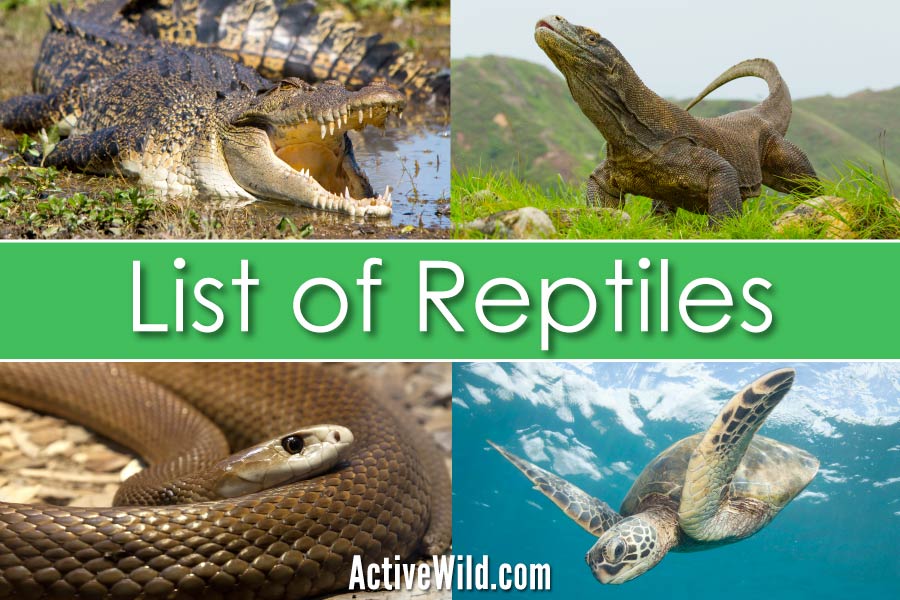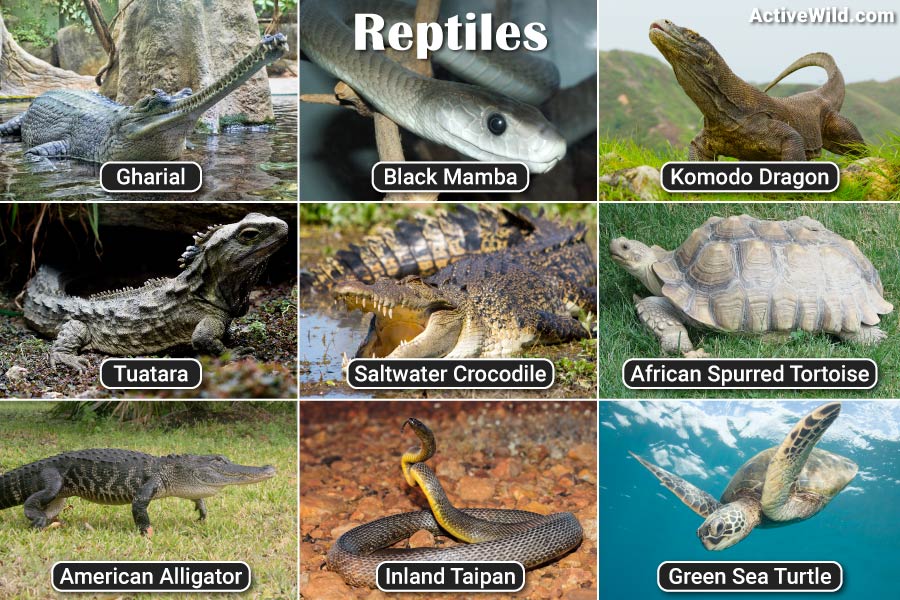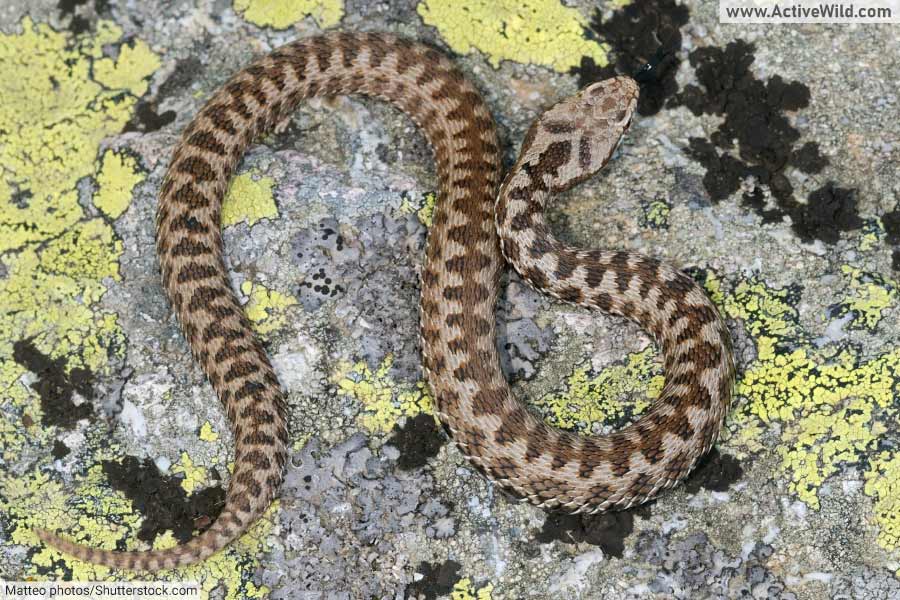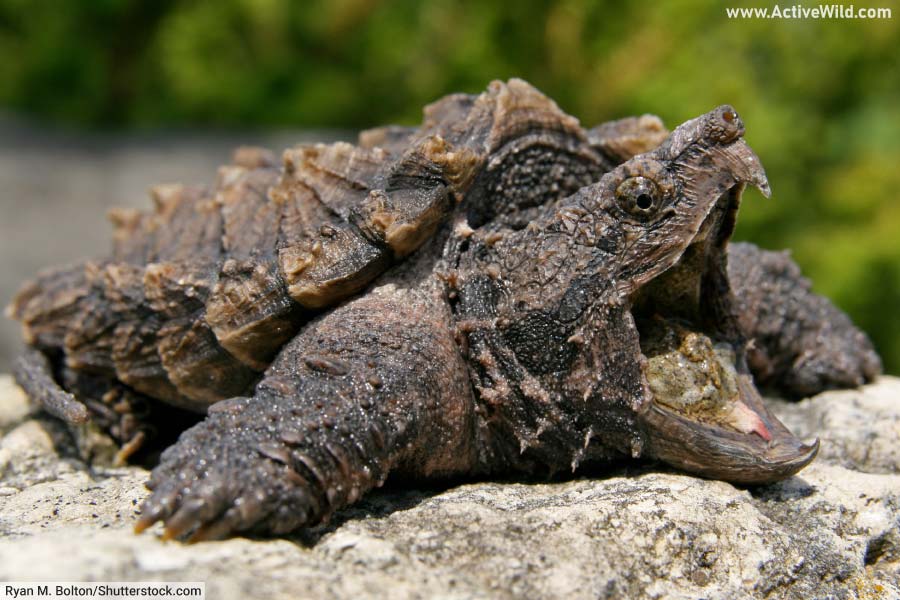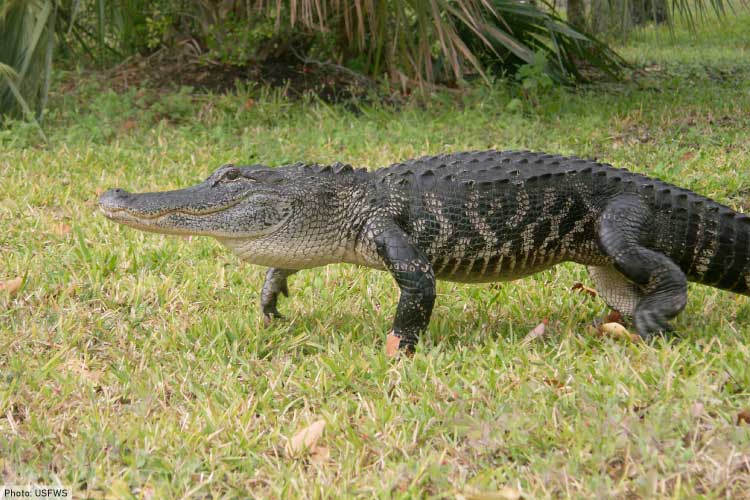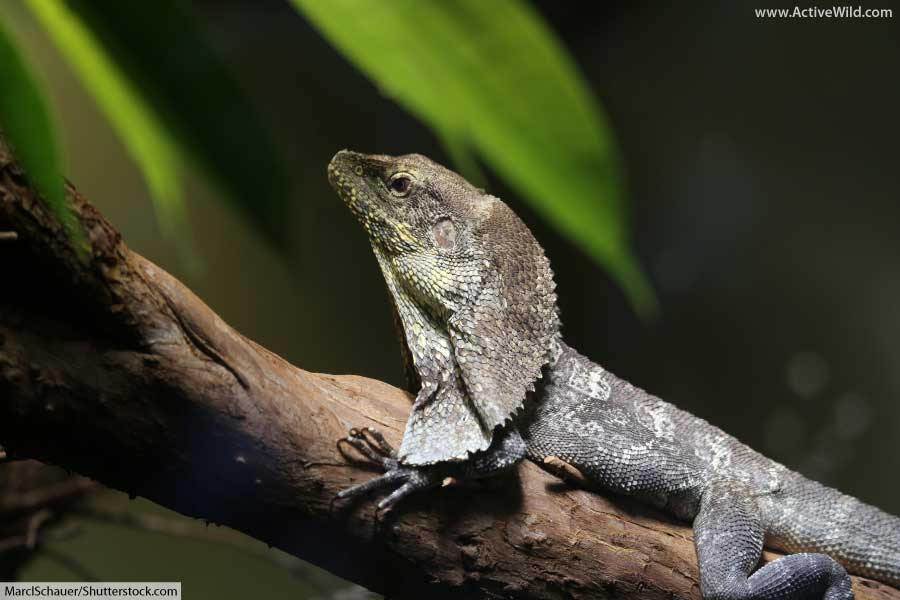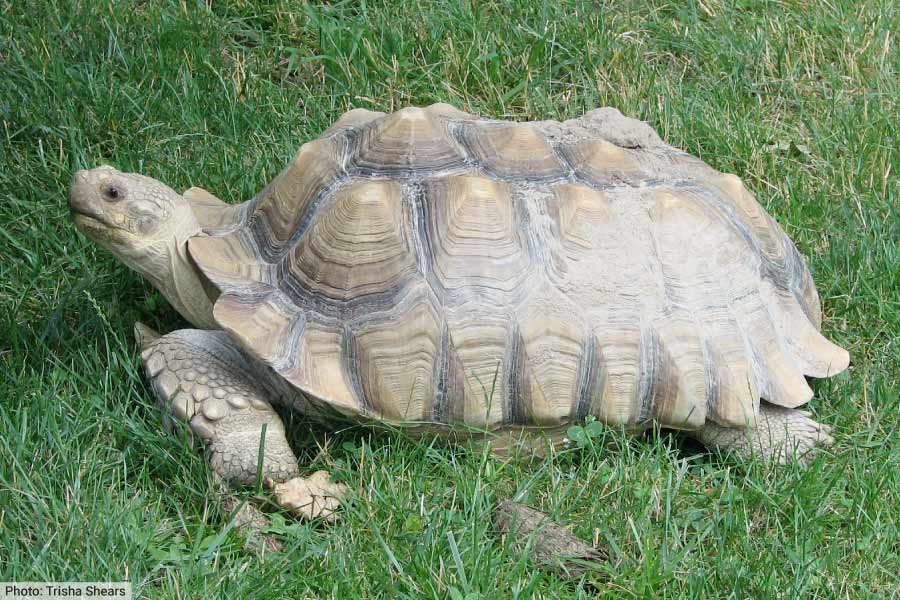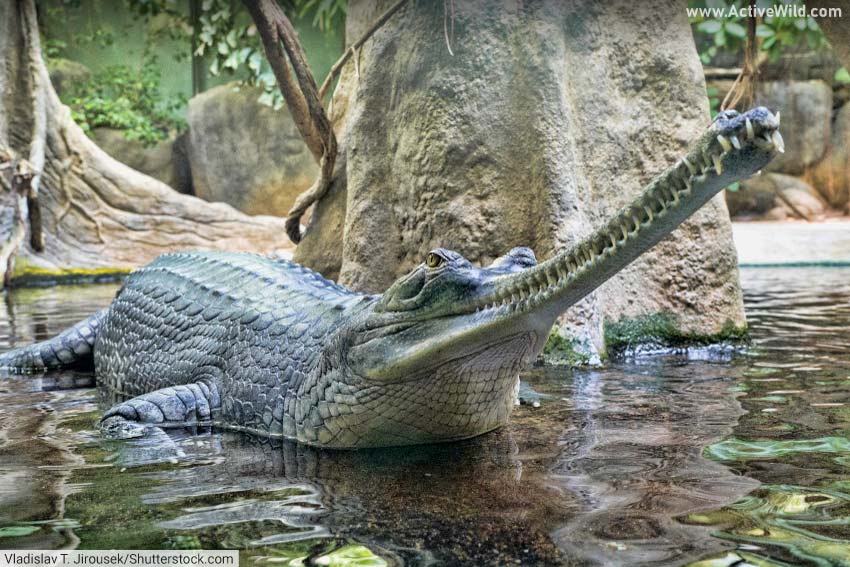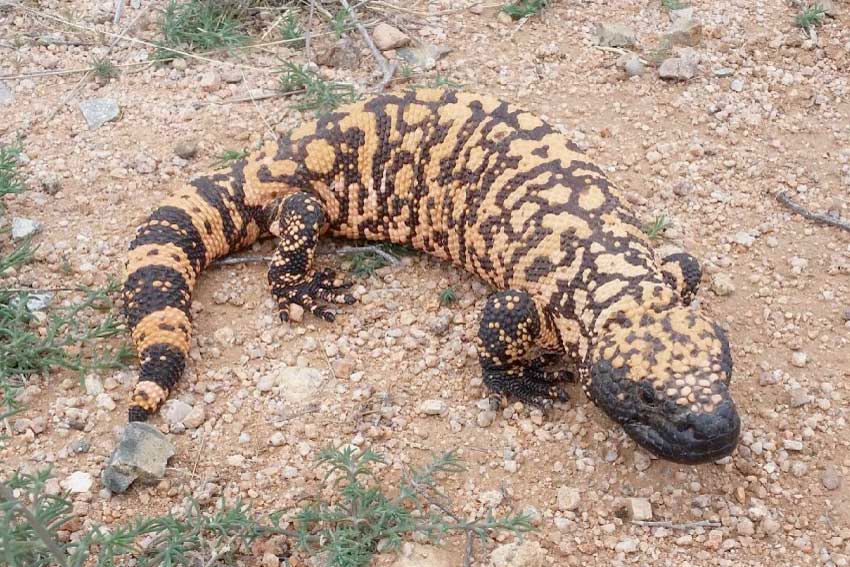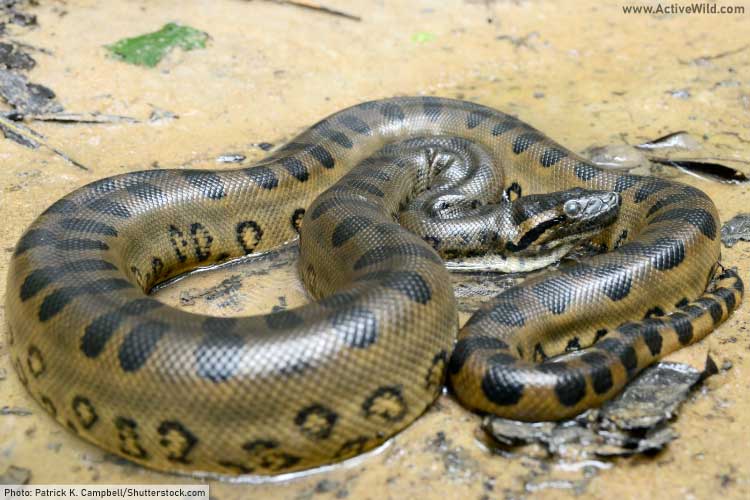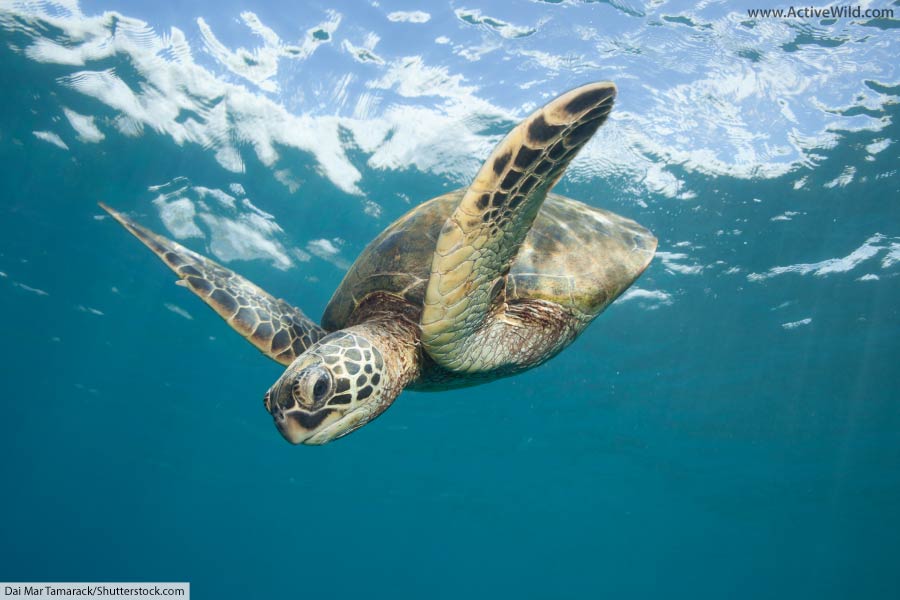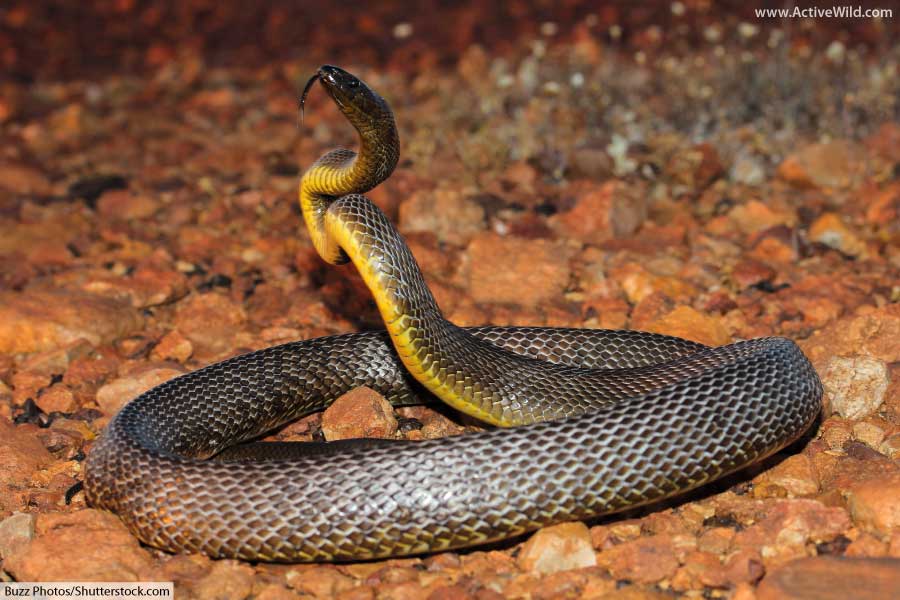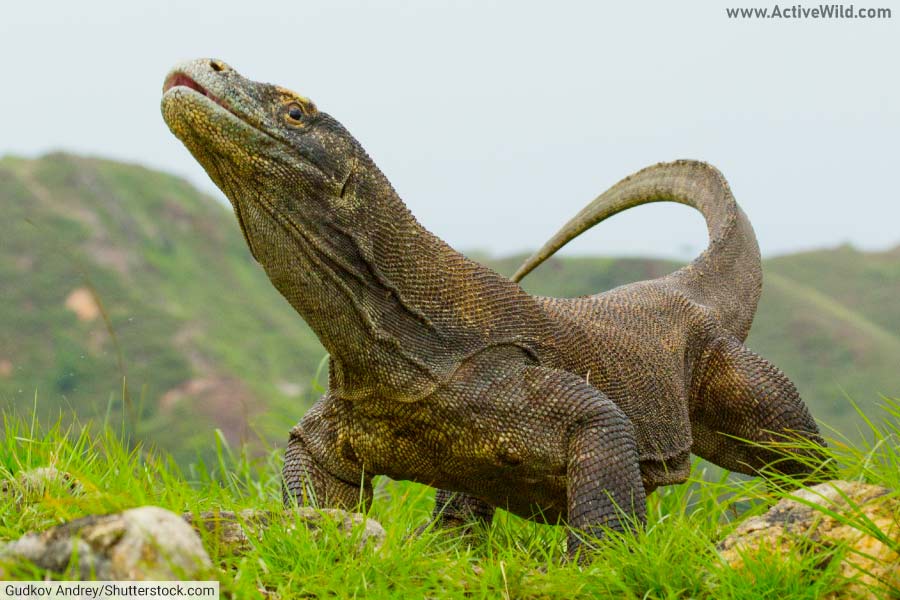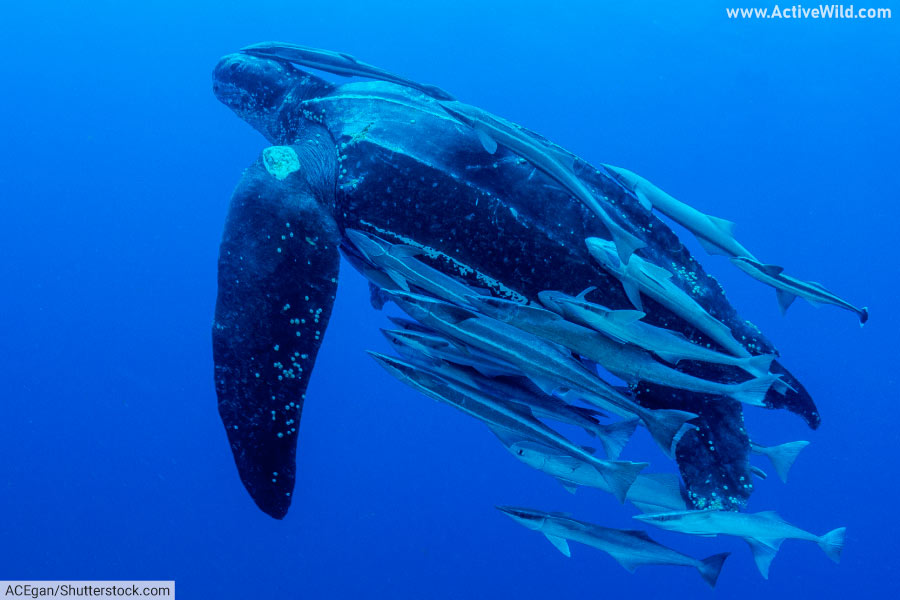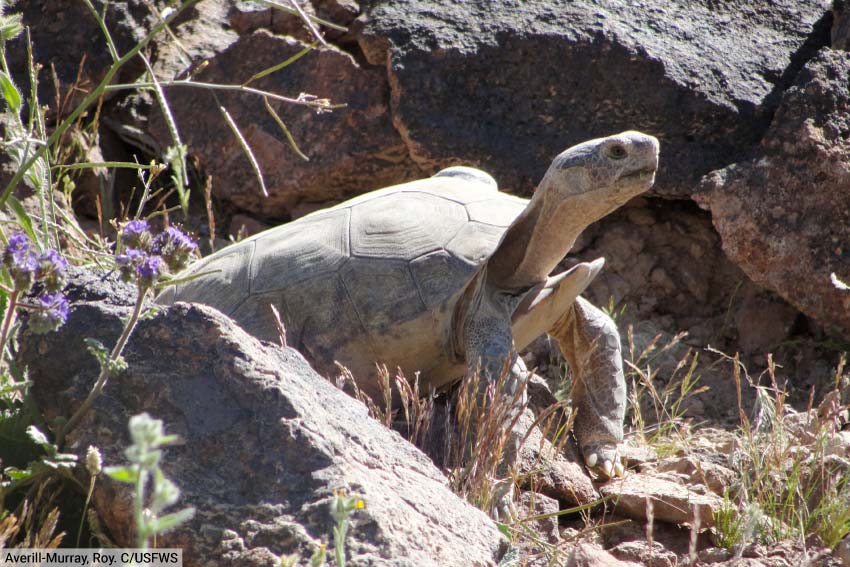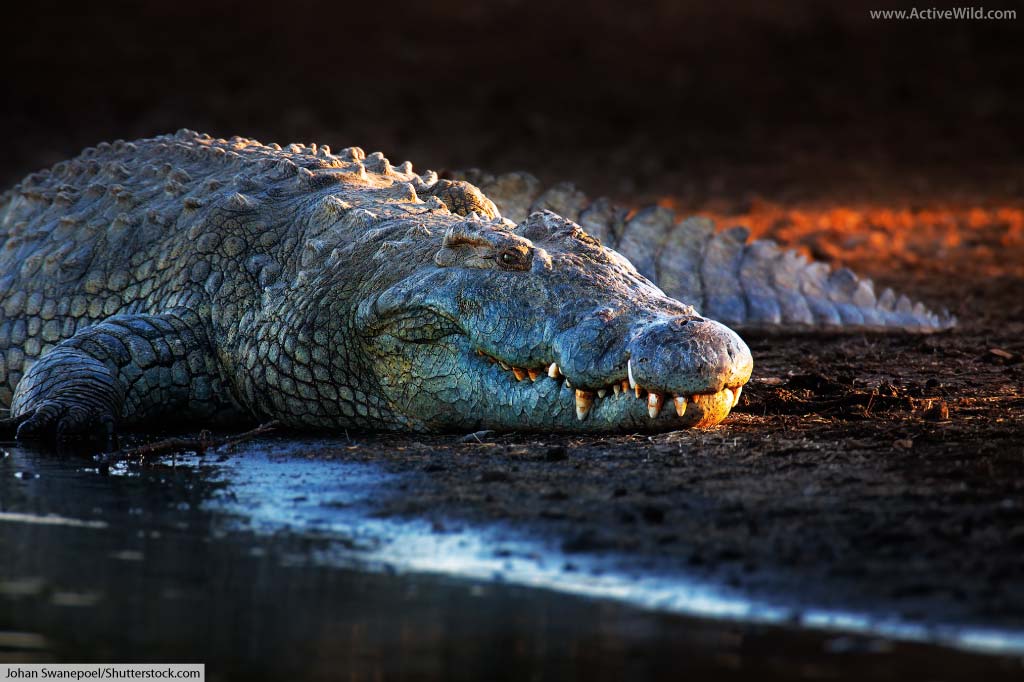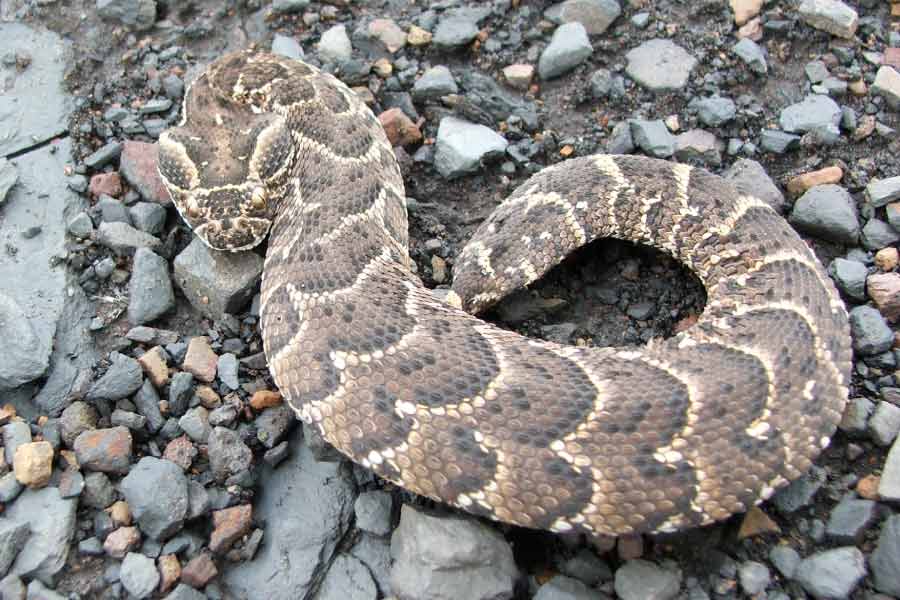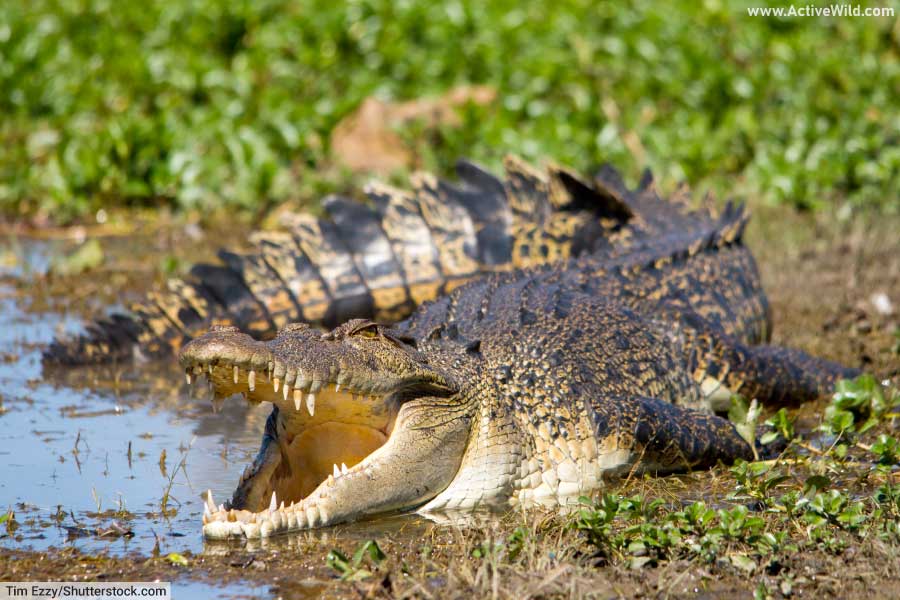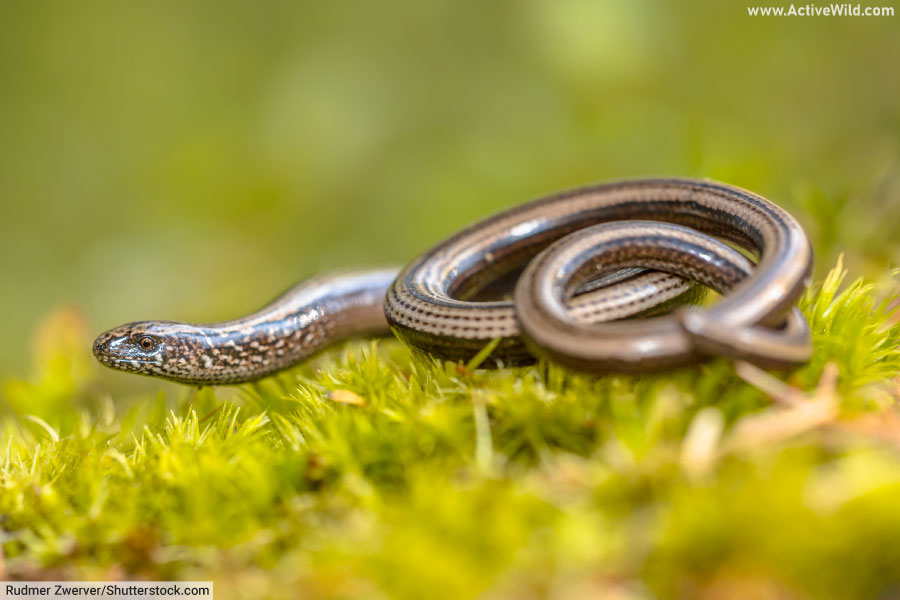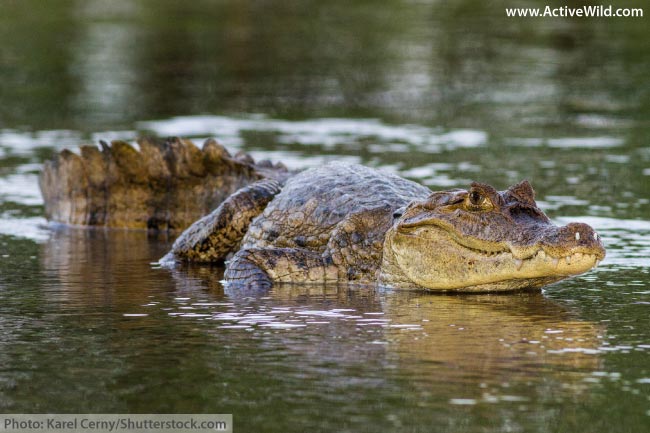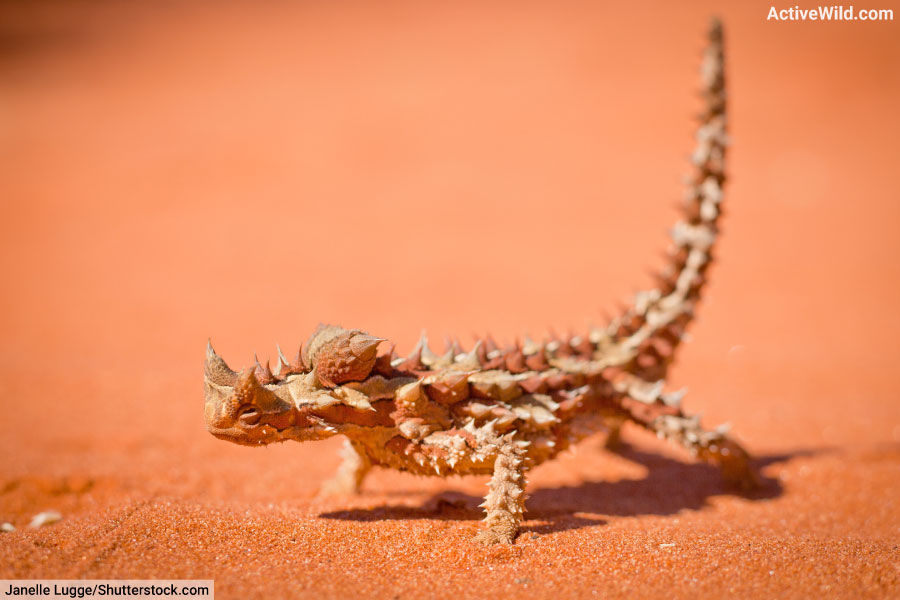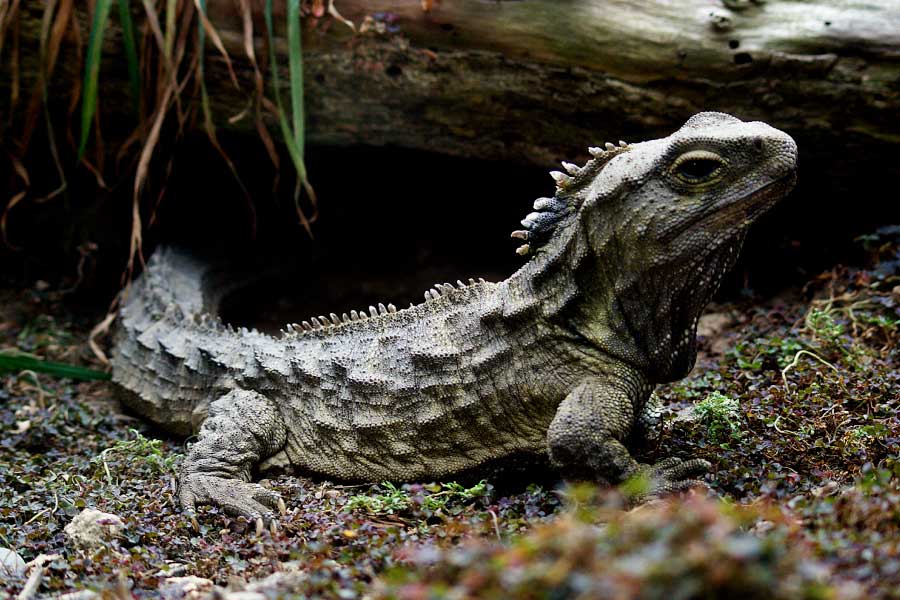List of reptiles with pictures and facts: examples of reptiles from all around the world.
On this page you’ll find: the world’s largest crocodile (which also happens to be the world's largest reptile); the most venomous snake, the largest lizard, the largest sea turtle, a venomous lizard, and reptiles with surprising adaptations for surviving in inhospitable habitats.
Page Index
- Introduction To Reptiles
- List Of Reptiles
- Adder (Common)
- Alligator Snapping Turtle
- American Alligator
- Black Mamba
- Frilled Lizard
- African Spurred Tortoise
- Gharial
- Gila Monster
- Green Anaconda
- Green Sea Turtle
- Inland Taipan
- Komodo Dragon
- Leatherback Sea Turtle
- Mojave Desert Tortoise
- Nile Crocodile
- Puff Adder
- Saltwater Crocodile
- Slow-Worm
- Spectacled Caiman
- Thorny Devil
- Tuatara
- List Of Reptiles: Further Reading
Related Pages On Active Wild
- Visit our Natural History Bookstore for a selection of awesome Books On Reptiles
- Find out more about reptiles: Reptiles: The Ultimate Guide
Introduction To Reptiles
Reptiles are animals in the class Reptilia. Unlike most amphibians, reptiles evolved the ability to complete their life cycle away from water, giving them an advantage that allowed them to thrive in a wider range of habitats.
All reptiles are vertebrates that breathe air with lungs. Characteristics shared by most (but not all) reptiles include: laying eggs, having scaly skin, and being cold-blooded (i.e., lacking the ability to alter the temperature of their bodies).
Most living reptiles apart from the testudines are carnivorous. Testudines are omnivorous or herbivorous.
The class Reptilia contains four orders:
- Crocodylia (crocodiles, alligators, caimans and gharials)
- Rhynchocephalia (the tuatara)
- Squamata (snakes, lizards and worm lizards)
- Testudines (turtles and tortoises, etc.)
Examples of reptiles from all four orders are included in the following list of reptiles.
List Of Reptiles
Adder (Common)
- Scientific name: Vipera berus
- Where found: Europe, Asia
- Type of reptile: Snake
- Family: Viperidae
- Conservation status: Least Concern
The common adder is a member of the viper family, Viperidae. It is found throughout much of Europe (from France and the UK eastwards), and its range also extends into Asia.
Easily identified by the zigzag markings running along the length of its back, the adder has a squat appearance and is usually grey / pale brown in color. (Some individuals are red-brown or even black).
The adder can reach lengths of up to 75 cm (30 in.), although most individuals are significantly smaller than this.
Like all vipers, the adder is venomous and equipped with a pair of sharp, retractable, hollow fangs with which the venom is injected. Although a bite from an adder can be painful, it is non-lethal to most humans.
The adder is found in a range of habitats, including forests, heaths, rocky areas and wetlands. The species hibernates in the winter, and is most active in spring, when mating occurs.
- You can see a list of every reptile found in Britain on this page: British Reptiles List
Alligator Snapping Turtle
- Scientific name: Macrochelys temminckii
- Where found: North America
- Type of reptile: Turtle
- Family: Chelydridae
- Conservation status: Vulnerable
The alligator snapping turtle is the world’s largest freshwater turtle; the largest individuals can reach weights of over 220 lb. (100 kg). This prehistoric-looking reptile is found in rivers and streams in the southeastern United States.
The alligator snapping turtle has a worm-shaped appendage on its tongue. This is used as “bait” to lure fish within range of the turtle’s powerful jaws.
The species’ “Vulnerable” conservation status is due mainly to habitat loss.
- You can find out more about the alligator snapping turtle on this page: Alligator Snapping Turtle Facts
- Discover more American reptiles on this page: American Reptiles List with Pictures & Facts
American Alligator
- Scientific name: Alligator mississippiensis
- Where found: North America
- Type of reptile: Crocodilian
- Family: Alligatoridae
- Conservation status: Least Concern
The American alligator is large, predatory reptile found in the southeastern United States from North Carolina to the Rio Grande, and in the northeastern Mexican state Tamaulipas.
The species is one of two crocodilians native to the US (the other being the American crocodile), and one of only two living alligators in the world (the other being the Chinese alligator).
This iconic North American animal is the state reptile of Florida, Louisiana and Mississippi.
The American alligator is a member of the reptile family Alligatoridae, which is home not only to the two species of alligator, but also to the world’s caimans.
- You can find out more about the American alligator on this page: American Alligator Facts
- Discover more American reptiles on this page: American Reptiles List with Pictures & Facts
- You can find out about caimans on this page: Caiman Facts
Black Mamba
- Scientific name: Dendroaspis polylepis
- Where found: Africa
- Type of reptile: Snake
- Family: Elapidae
- Conservation status: Least Concern
The black mamba is Africa’s longest (and the world’s second-longest) venomous snake, reaching lengths of over 3 m (9.8 ft.).
The species is known not just for its size, but also for its speed and aggression. When threatened, the black mamba will rear up and bite its aggressor multiple times.
Although its venom is less powerful than that of the inland taipan, the black mamba is responsible for more human fatalities and is one of Africa’s most dangerous snakes.
The black mamba ranges in color from dark grey to pale brown. Its name comes from the black color of the inside of its mouth, which is a deep black ringed by bright white. The snake uses its mouth to make a high-contrast threat display.
- You can find out more about the black mamba on this page: Black Mamba Facts
Frilled Lizard
- Scientific name: Chlamydosaurus kingii
- Where found: Australasia
- Type of reptile: Lizard
- Family: Agamidae
- Conservation status: Least Concern
The frilled lizard, also known as the frill-necked lizard, is a reptile found in northern Australia and southern New Guinea. It belongs to the agamid family, Agamidae, a family of over 300 lizard species.
When threatened, the frilled lizard raises a brightly-colored flap of skin around its head. This is often enough to startle a would-be predator or to intimidate a rival.
The frilled lizard is grey to orange-brown in color. This coloration serves as camouflage; the lizard is typically found perched on a tree trunk. The species is relatively large, with a nose and tail length of up to 85 cm / 2.79 ft. It is capable of walking bipedally (i.e., using only its hind legs).
The frilled lizard preys on insects and small vertebrates.
- You can find out more about the frilled lizard on this page: Frilled Lizard Facts
- You can see more Australian reptiles on this page: Australian Reptiles List
African Spurred Tortoise
- Scientific name: Centrochelys sulcata
- Where found: Africa
- Type of reptile: Turtle
- Family: Testudinidae
- Conservation status: Endangered
The African spurred tortoise is the third-largest type of tortoise in the world, and the largest found on the mainland (the Galapagos tortoises and the Aldabra tortoise, which are larger, are found on islands).
The African spurred tortoise is found in the Sahara Desert and the Sahel; a dry grassland / savanna region that stretches across Africa from Mauritania in the west to Ethiopia and Eritrea in the east.
The species is endangered due to habitat loss (due to farming and bush fires), capture for the pet trade, and being hunted for meat.
- You can see a list of African reptiles on this page: African Reptiles List
Gharial
- Scientific name: Gavialis gangeticus
- Where found: Asia
- Type of reptile: Crocodilian
- Family: Gavialidae
- Conservation status: Critically Endangered
The gharial is a crocodilian found in rivers in India, Bangladesh and Nepal. Although its body length rivals (or exceeds) that of the mighty saltwater crocodile, the gharial is slenderly-built and weighs significantly less.
The snout of the gharial is long and thin, and filled with sharp, narrow teeth; the ideal tools for capturing the slippery fish prey that forms the bulk of the reptile’s diet.
Structures such as dams and barrages, in addition to having a negative effect on the gharial’s habitat, have also caused the reptile’s population to become severely fragmented. This is one of the main reasons that the species is now critically endangered.
- You can find out more about gharials on this page: Gharial Facts
Gila Monster
- Scientific name: Heloderma suspectum
- Where found: Northern America
- Type of reptile: Lizard
- Family: Helodermatidae
- Conservation status: Near Threatened
The Gila monster is a lizard found in desert regions of the southwestern United States, including both the Mojave and Sonoran Deserts. It has a distinctive orange / yellow and black markings and bead-like scales.
The Gila monster is one of two venomous lizards found in North America (the other being the closely-related Mexican beaded lizard).
Despite the lizard’s fearsome reputation, the Gila monster’s bite, although painful, is not deadly to healthy humans.
- You can find out more about the Gila monster on this page: Gila Monster Facts
- Discover more American reptiles on this page: American Reptiles List with Pictures & Facts
- You can see more desert animals on this page: Desert Animals List with Pictures & Facts
Green Anaconda
- Scientific name: Eunectes murinus
- Where found: South America
- Type of reptile: Snake
- Family: Boidae
- Conservation status: Least Concern
The green anaconda is the world’s heaviest species of snake, but not quite the longest (the longest is the reticulated python). That being said, a green anaconda can still grow to over 16.4 ft. / 5 meters in length!
This huge rainforest snake is an excellent swimmer, and is found in the lakes and rivers of the Amazon Rainforest.
Like all members of the family Boidae, the green anaconda is non-venomous. Instead, it relies on its squeezing ability to subdue its prey.
- You can find out more about the green anaconda on this page: Green Anaconda Facts
Green Sea Turtle
- Scientific name: Chelonia mydas
- Where found: Tropical and subtropical oceans worldwide
- Type of reptile: Turtle
- Family: Cheloniidae
- Conservation status: Endangered
The green sea turtle is one of the largest sea turtles. A layer of green fat underneath its shell gives the species its name. (The name doesn’t come from the turtle’s shell, which is usually dark brown.)
Upon reaching adulthood, the green sea turtle becomes almost entirely herbivorous (i.e., it only eats plants). This is unusual among reptiles, which are mostly carnivorous.
- You can find out more about the green sea turtle on this page: Green Sea Turtle
- You can find out more about the seven species of sea turtle on this page: Sea Turtles Facts
Inland Taipan
- Scientific name: Oxyuranus microlepidotus
- Where found: Australia
- Type of reptile: Snake
- Family: Elapidae
- Conservation status: Least Concern
The inland taipan, also known as the “fierce snake”, is the world’s most venomous snake. It is found in semi-arid habitats in Queensland and South Australia.
The extreme potency of the inland taipan’s venom is a result of the species having evolved specifically as a hunter of mammals. Just one bite is thought to contain enough venom to kill 100 humans.
Surprisingly, the inland taipan is responsible for relatively few attacks on humans. Unlike the closely-related coastal taipan (one of the world’s most dangerous snakes), the species has a placid nature and lives in uninhabited areas.
- You can find out more about this species here: Inland Taipan Facts
Komodo Dragon
- Scientific name: Varanus komodoensis
- Where found: Indonesia
- Type of reptile: Lizard
- Family: Varanidae
- Conservation status: Endangered
Growing to 3 meters (10 ft.) in length, the Komodo dragon is the world’s largest lizard. It is found on the Indonesian island of Komodo, from which it gets its name, and two neighboring islands.
With its lumbering gait, this Southeast Asian reptile would at first glance seem unable to catch nimble-footed prey. Don’t be fooled; the Komodo dragon is capable of a surprising turn of speed. In addition, the species’ saliva is thought to produce venom that makes its bite even more potent.
- You can find out more about the Komodo dragon on this page: Komodo Dragon Facts
Leatherback Sea Turtle
- Scientific name: Dermochelys coriacea
- Where found: Tropical, temperate and sub-polar oceans worldwide
- Type of reptile: Turtle
- Family: Dermochelyidae
- Conservation status: Vulnerable
The leatherback sea turtle, with a maximum weight of around 750 kg / 1650 lb., is the largest of the seven sea turtle species. It is the only member of the family Dermochelyidae (the other six sea turtles belong to the family Cheloniidae). It’s also the “odd one out” in having a tough, leathery shell rather than a hard shell.
With a recorded top speed of 21.92 mph / 35.28 km/h, the leatherback is not only the fastest sea turtle, it’s one of the fastest-moving of all reptiles. It also dives deeper than other sea turtles, having been recorded at depths of 1.3 km / 0.81 miles.
- You can find out more about the leatherback sea turtle on this page: Leatherback Sea Turtle Facts
Mojave Desert Tortoise
- Scientific name: Gopherus agassizii
- Where found: North America
- Type of reptile: Turtle
- Family: Testudinidae
- Conservation status: Critically Endangered
The Mojave desert tortoise is found in the Mojave Desert. It is closely related to the Sonoran desert tortoise, Gopherus morafkai. Prior to 2011, both were considered to be a single species called the desert tortoise.
The Mojave desert tortoise has a shell length of 9 to 14.5 in. (23 to 37 cm). It is slow-moving and herbivorous (plant-eating), with front paws that are flattened for digging.
The Mojave Desert tortoise digs its own burrows, and will hibernate underground during the winter.
A 2020 study, whose results were published in 2021, found the species to be Critically Endangered. This is due mainly to habitat loss.
- You can find out more about this species here: Desert Tortoise Facts
Nile Crocodile
- Scientific name: Crocodylus niloticus
- Where found: Africa
- Type of reptile: Crocodilian
- Family: Crocodylidae
- Conservation status: Least Concern
The Nile crocodile is a large reptile found in freshwater rivers and lakes across much of Africa, including the island country of Madagascar.
The Nile crocodile is the largest and most common crocodile found in Africa, and the world’s second-largest crocodilian (after the saltwater crocodile). Male Nile crocodiles (the larger of the sexes) occasionally reach lengths in excess of 5.5 m / 18.04 ft.
Known for its aggressiveness, the Nile crocodile is one of Africa’s most dangerous animals.
- You can find out more about the Nile crocodile on this page: Nile Crocodile Facts
- You can find out more about the different crocodiles of Africa on this page: African Crocodiles
Puff Adder
- Scientific name: Bitis arietans
- Where found: Africa
- Type of reptile: Snake
- Family: Viperidae
- Conservation status: Currently Unassessed
The puff adder is a medium-sized venomous African snake. One of the most common snakes in Africa, the species is found in most regions of the continent apart from rainforests and desert regions. It is most common in savannas and grasslands.
Due to its abundance, potent venom and aggressive temperament, the puff adder is responsible for the most snake bite fatalities in Africa. It is a nocturnal ambush hunter that waits for its victims to draw near before striking.
The usual length of a puff adder is around 1 m / 3.28 ft., although individuals of almost twice this length have been reported.
Saltwater Crocodile
- Scientific name: Crocodylus porosus
- Where found: Australia, Asia
- Type of reptile: Crocodilian
- Family: Crocodylidae
- Conservation status: Least Concern
The saltwater crocodile isn’t just the world’s biggest crocodile, it’s also the world’s biggest reptile. This fearsome animal can reach lengths of well over 6 m (19.7 ft.).
Apart from its great size, distinguishing features of the saltwater crocodile include: a wide snout, wide body and fewer scutes (the protective plates found in a reptile’s skin) on its neck than other crocodiles. The species ranges in color from grey to nearly black. Most are dark green.
The saltwater crocodile is found in estuaries, river systems and swamps in Northern Australia and several Southeast Asian countries and territories. The species is known to travel long distances by sea.
Male saltwater crocodiles are territorial and less social than other crocodiles. Females guard their nests and the hatchlings.
- You can find out more about the saltwater crocodile on this page: Saltwater Crocodile Facts
Slow-Worm
- Scientific name: Anguis fragilis
- Where found: Europe
- Type of reptile: Lizard
- Family: Anguidae
- Conservation status: Least Concern
Despite being called a ‘worm’, and looking like a snake, the slow-worm is actually a lizard, albeit one without legs. Unlike a snake, a slow worm can blink, and like many lizards, it can shed its tail to avoid predation.
The slow worn is brown-grey in color, with smooth skin and scales that do not overlap. Most individuals are between 30 and 40 cm (11.8 and 15.7 in.) in length.
The slow worm is found in forests, heathlands, woodland edges, hedgerows and gardens throughout Europe. It hibernates from October to March.
The slow-worm is one of the longest-living reptiles; individuals have been known to live 54 years in captivity.
Spectacled Caiman
- Scientific name: Caiman crocodilus
- Where found: Central America, South America
- Type of reptile: Crocodilian
- Family: Alligatoridae
- Conservation status: Least Concern
Caimans are predatory reptiles that live in the rivers and lakes of Central and South America. The six species of caiman belong to the alligator family, Alligatoridae.
The spectacled caiman is around 1.5 m / 4.92 ft. in length, with the largest males reaching lengths of up to 2.5 meters / 8.2 ft.
The species gets its name from a bony ridge between its eyes that makes the reptile appear to be wearing a pair of spectacles.
The spectacled caiman is able to live in habitats ranging from rainforests to grasslands. It is found across a wider range than any other caiman, and is present from southern Mexico to Brazil and Peru.
- You can find out more about the spectacled caiman on this page: Spectacled Caiman Facts
- Find out more about caimans on this page: Caiman Facts & Information
Thorny Devil
- Scientific name: Moloch horridus
- Where found: Australia
- Type of reptile: Lizard
- Family: Agamidae
- Conservation status: Least Concern
This fearsome-looking lizard is found in the dry inland regions of Australia. Despite its aggressive appearance, the thorny devil is only dangerous if you happen to be an ant (this little reptile eats several thousand ants every day).
The thorny devil has a number of adaptations for living in the desert, including grooves in its skin that channel moisture to its mouth.
A ‘false head’ behind the lizard’s real head–which provides protection from predators–only adds to the animal’s bizarre appearance.
- You can find out more about the thorny devil on this page: Thorny Devil Facts
- You can see more Australian reptiles on this page: Australian Reptiles List with Pictures & Facts
Tuatara
- Scientific name: Sphenodon punctatus
- Where found: New Zealand
- Type of reptile: Rhynchocephalian
- Family: Sphenodontidae
- Conservation status: Vulnerable
The tuatara is the only remaining species of class Rhynchocephalia, a group of reptiles that was once far more widespread and diverse. By the end of the Cretaceous Period, these lizard-like reptiles had largely disappeared.
The tuatara is found on several New Zealand islands. It is around 80 cm / 31 in in length and green-brown in color. The single row of teeth on its lower jaw fit between a double row in the upper jaw: an arrangement not seen in any other living reptile.
- You can find out more about tuataras on this page: Tuatara Facts
List Of Reptiles: Further Reading
- Visit our Natural History Bookstore for a selection of awesome Books On Reptiles
- Find out more about reptiles: Reptiles: The Ultimate Guide
Discover more amazing reptiles from all around the world...

